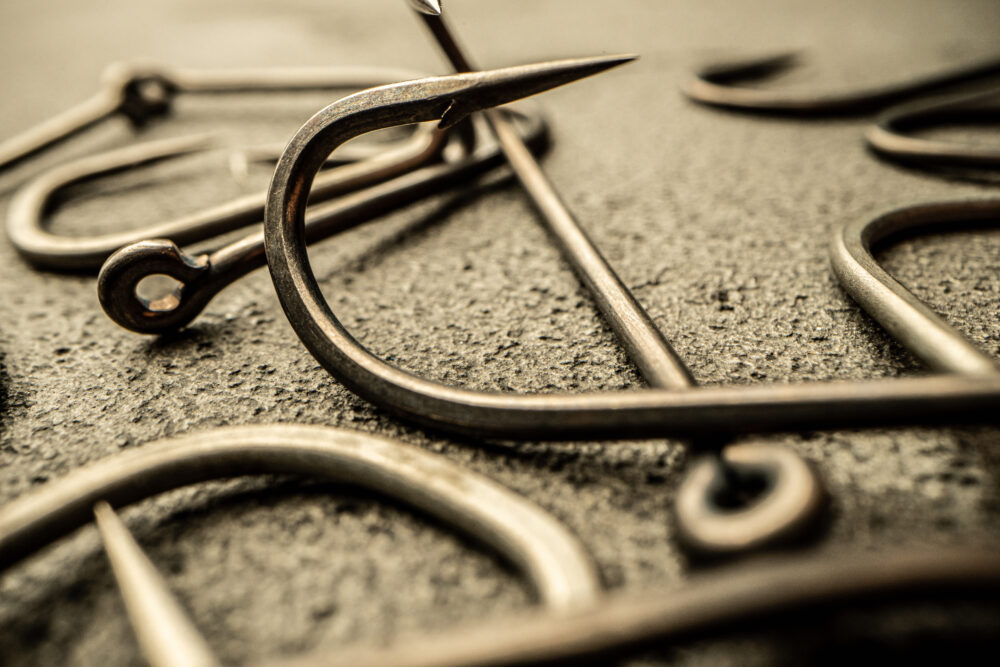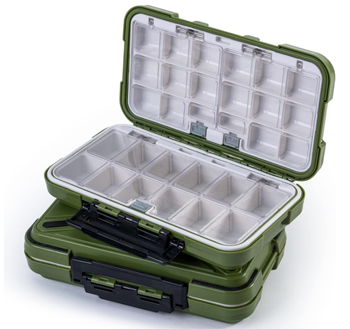
Fly fishing hooks. With a tube fly you always choose the hook after the fly is tied or after fishing it for a while, or if damaged tie on a new one. Envato image.
The hook is not part of tying any tube fly pattern
By Skip Clement and Ruben Martin Video
A fly pattern with universal credibility tied on a hook is always proportionally ‘dressed’ to fill out a hook. A tube fly with the same pattern and of equal size does not need a hook of equal size. That makes the fly lighter and, as a dry fly, not likely to drag the tail deeper into the water. It also makes casting easier.
The hook is not part of tying any tube fly pattern. An angler can take advantage of that situation and choose a smaller hook or any hook without matching the length (2x long, 3x long, etc.) or shape of any pattern. That reduces the cost of having so many hooks and simply not having to buy longer shanked hooks or special designs of hooks.
The hook size and design used for a tube fly can be changed anytime by removing and replacing it with another
If the latter were the only recommendation for a tube fly, one would think it enough to start a mad rush to the nearest fly shop or tying seminar. But hook-tied flies retain the most popular status worldwide, even though tube flies catch more fish. Go figure?
Celebrity fly tyers with many YouTube followers have said the obvious as to why tyers have yet to become tube tyers as often as you might think. Tube flies are ugly.

Large Tube Fly Wallet / Size 12 x 20 cm folded / Art Merk Studio
Holds 35 pins for tubes inside up to 4cm tube body length. Holding pins are made of copper and do not rust.
Leather is sealed with a beeswax mixture to make it water-resistant.
$95 USD, Plus shipping.
Instagram, Facebook or email: art@artmerkstudio.com
No damage
A tube fly will likely survive fish-mouth leverage shakes that maul hook-tied flies. It stays the leverage issue because it generally rides up the leader away from being bitten or used as leverage to free a hook.
Also, a rock bent or dulled hook point on a tube fly only needs replacement. A damaged hook-tied fly is of no further use and discarded.
With any tube fly, anglers can use any size hook that they feel better serves the purpose of capture. The hook plays no part in fly design or size
A tube fly will usually swim more naturally than a hook-tied fly. Imagine that a hook-tied dry fly will swim tail end down into the water column and suffer rejection or short strikes. Its weight sinks the tail end. A smaller and thinner carbon steel wire will keep the tube swimming level.
Transporting tube flies
Wallets with ziplock inserts tend to crush streamer flies. One wallet, designed to carry tube flies (35), has a foam patch divider that can hold a supply of hooks. See the image of Merk Large Wallet. Otherwise, the best storage is sectioned plastic lure boxes in zippered vest or jacket pockets.
A desirable way to transport tippet material is the old-fashioned way. On a tippet spool. No matter whether hook-tied or tube.

Goture Fishing Lure Boxes, 2 Pcs Waterproof Tackle Plastic Storage, Small Lure Case, Mini Lure Box, Fishing Accessories Boxes Storage Containers Green. $30 Free Shipping with Amazon Prime
A good butt section leader is built with a tapered 7-foot or 9-foot leader cut back about 18- to 22-inches (the length of the designated pound test of the tapered leader) and then add a transition section with a pound-test rating lesser than that of the leaders’ butt end and attach a tippet ring.
Make the final attachment by guiding the tippet through the tube or junction tubing and attach it to the tippet ring with a preferred knot. You can always change the hook orientation – point up or point down.
NOTE: The International Game Fish Association (IGFA) limits all tippets for fly fishers to a maximum of 20-pound test – marlin or blue gill.
If you like tube flies but need some viewing time demonstrating tying instructions, stay tuned to us here at flylifemagazine.com. Each week, internationally recognized Ruben Martin will tie a tube fly.







